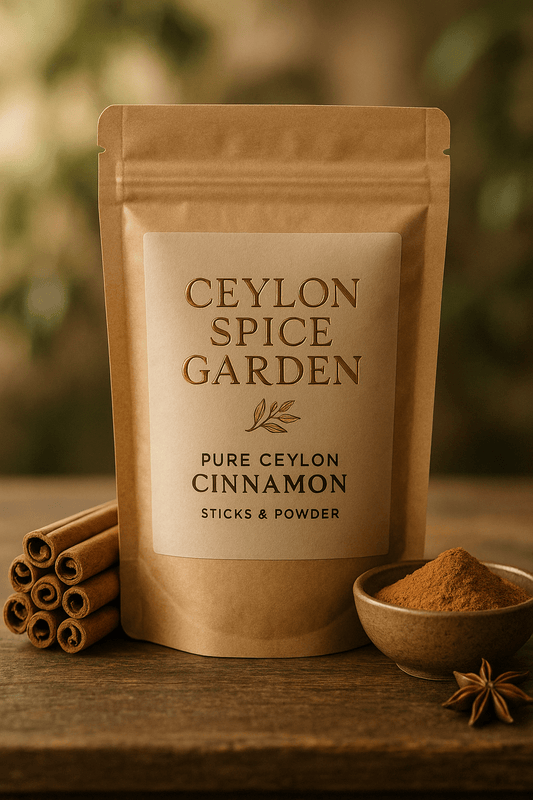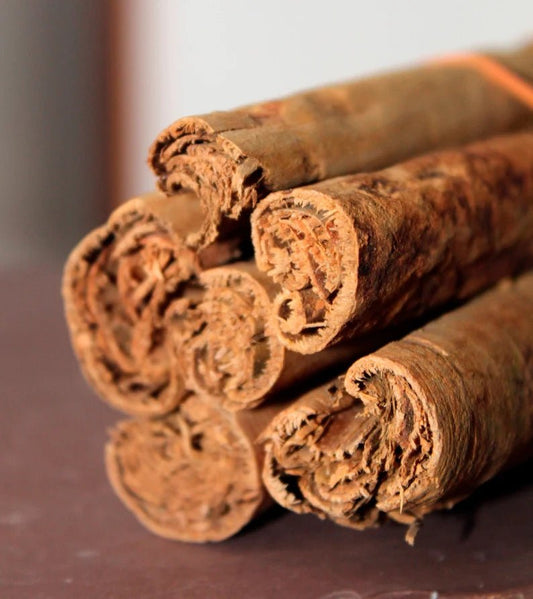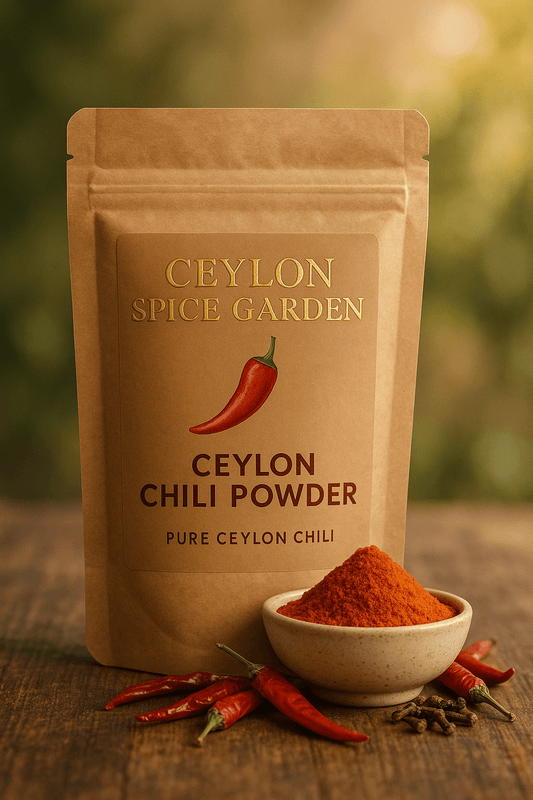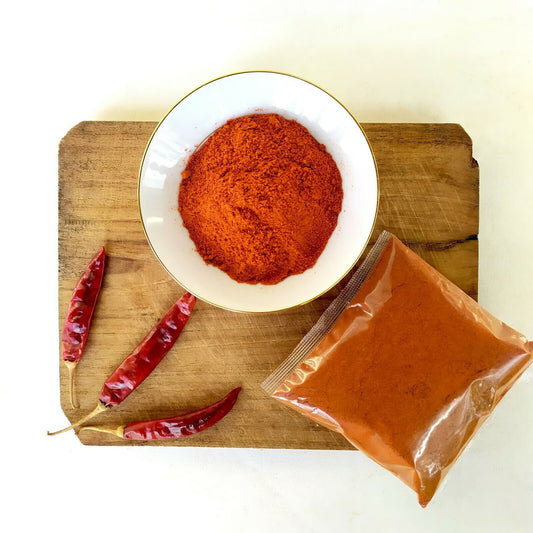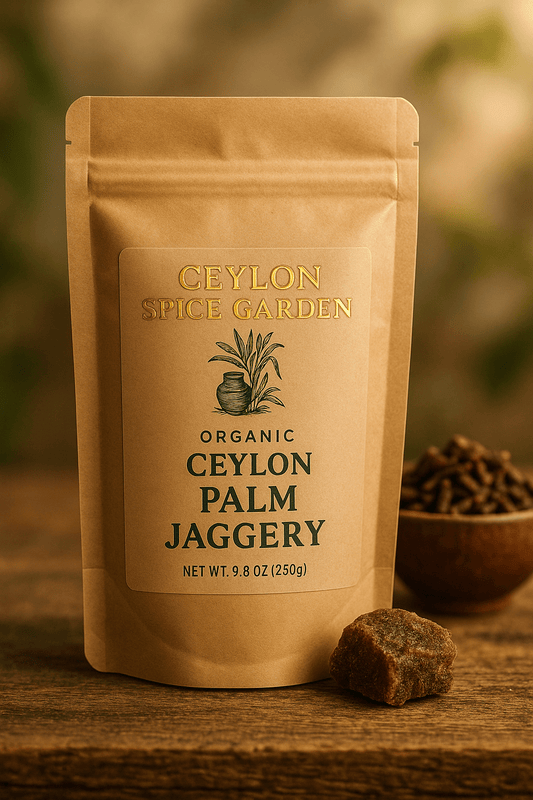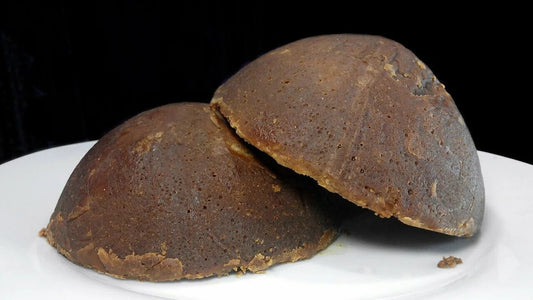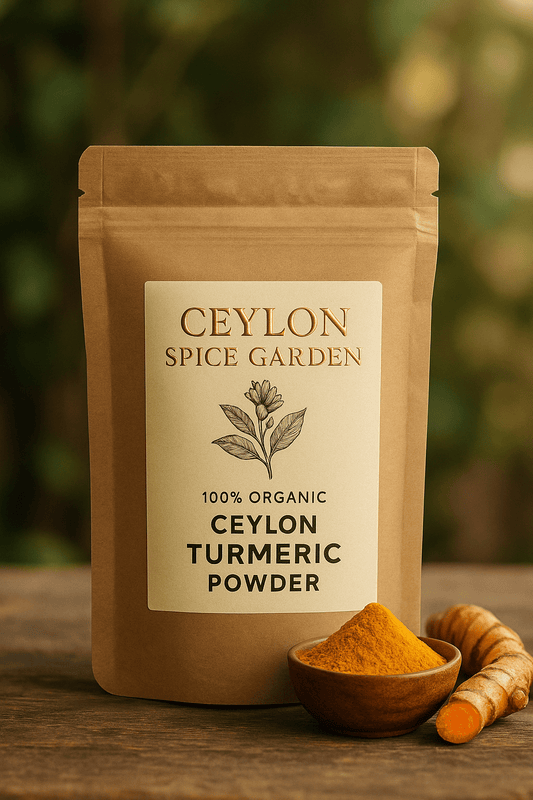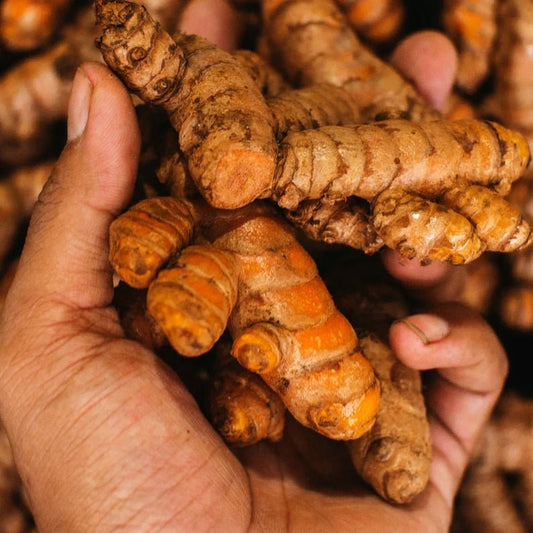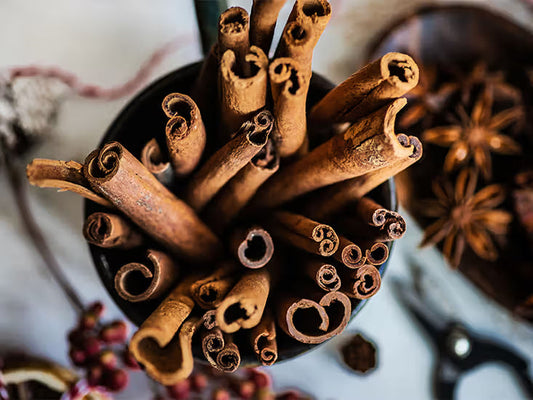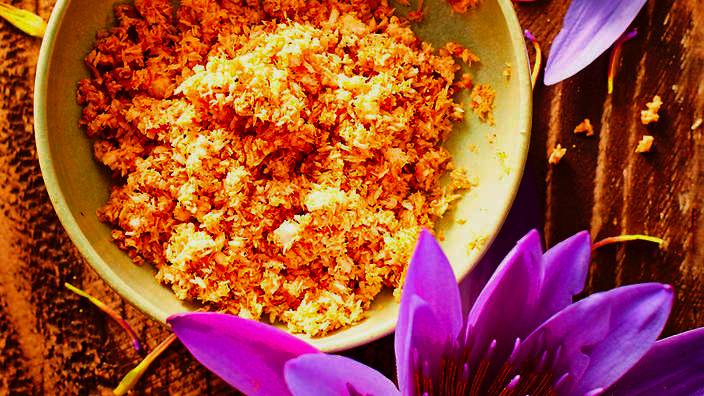
Spicy Sri Lankan Sambol Using Local Ingredients | Ceylon Spice Garden
Authentic Spicy Sri Lankan Sambol Using Local Ingredients: Complete Guide
Table of Contents
- Introduction to Sri Lankan Sambol
- Essential Local Ingredients
- Classic Pol Sambol (Coconut Sambol)
- Lunu Miris (Chili & Onion Sambol)
- Seeni Sambol (Caramelized Onion Relish)
- Katta Sambol (Crushed Chili Sambol)
- Regional Variations and Unique Sambols
- Traditional Preparation Techniques
- Pairing and Serving Suggestions
- Storage and Preservation
- Frequently Asked Questions
Introduction to Sri Lankan Sambol
Sri Lankan sambol is more than just a condiment – it's the fiery soul of Ceylon cuisine. These spicy accompaniments transform simple rice and curry meals into explosive flavor experiences. Unlike Indian chutneys or Southeast Asian sambals, Sri Lankan sambols showcase the unique interplay of heat, acidity, and umami using fresh local ingredients and premium Ceylon spices from Ceylon Spice Garden.
Every Sri Lankan household has its secret sambol recipes, passed down through generations. These vibrant condiments range from the ubiquitous pol sambol (coconut sambol) found at every meal to special occasion varieties like seeni sambol. What unites them all is the use of fresh, local ingredients – fiery chilies, aromatic curry leaves, tangy lime, and the distinctive Maldive fish that adds an unmistakable depth of flavor.
What Makes Sri Lankan Sambol Unique?
- Fresh Preparation: Most sambols are made fresh daily using a grinding stone
- Local Ingredients: Emphasis on hyper-local, seasonal ingredients
- Maldive Fish: Dried tuna adds unique umami flavor
- Texture Variety: From coarse ground to smooth pastes
- Heat Levels: Customizable from mild to extremely spicy
- No Cooking Required: Many sambols are raw preparations
Essential Local Ingredients for Authentic Sambol
The key to exceptional Sri Lankan sambol lies in sourcing the freshest local ingredients. Each component plays a crucial role in creating the perfect balance of flavors.
| Ingredient | Local Name | Purpose | Substitutions |
|---|---|---|---|
| Red Chilies | Rathu Miris | Heat and color | Thai chilies, cayenne |
| Green Chilies | Amumiris | Fresh heat | Serrano, jalapeño |
| Shallots | Rathu Lunu | Sweetness, texture | Red onions |
| Maldive Fish | Umbalakada | Umami depth | Fish sauce, anchovy |
| Curry Leaves | Karapincha | Aroma | No real substitute |
| Lime | Dehi | Acidity | Lemon |
| Coconut | Pol | Base, texture | Desiccated coconut |
| Goraka | Garcinia | Sourness | Tamarind |
Selecting Quality Chilies
The heat and flavor of your sambol depend heavily on chili selection. Sri Lankan cooks use different chilies for different sambols:
- Kochchi Miris: Small, extremely hot bird's eye chilies for maximum heat
- Mi Miris: Larger, milder chilies for color and moderate heat
- Nai Miris: Dried red chilies for deep color and smoky flavor
Classic Pol Sambol (Coconut Sambol)
Pol sambol is the king of Sri Lankan condiments – no meal is complete without it. This fiery coconut relish perfectly balances heat, salt, and acidity.
Traditional Pol Sambol Recipe
Heat Level: 🌶️🌶️🌶️ (Adjustable)
Ingredients:
- 2 cups freshly grated coconut
- 5-6 dried red chilies (or to taste)
- 1 small red onion, finely chopped
- 3-4 cloves garlic
- 1 teaspoon Maldive fish (umbalakada)
- 1 lime, juiced
- Salt to taste
- 2 tablespoons chili powder (optional, for color)
Traditional Method:
- 1Using a grinding stone (miris gala), grind together dried chilies, garlic, Maldive fish, and salt until you achieve a coarse paste.
- 2Add the freshly grated coconut to the grinding stone and mix thoroughly with the chili paste.
- 3Transfer to a bowl and mix in the finely chopped onions.
- 4Squeeze fresh lime juice over the mixture and combine well.
- 5Adjust salt and lime to taste. The sambol should be moist but not wet.
- 6For extra color, mix in chili powder from Ceylon Spice Garden.
Lunu Miris (Chili & Onion Sambol)
Lunu miris, literally meaning "onion chili," is a wet sambol that's dangerously addictive. This smooth, paste-like condiment is traditionally served with string hoppers, hoppers, and roti.
Authentic Lunu Miris Recipe
Heat Level: 🌶️🌶️🌶️🌶️
Ingredients:
- 10-15 small red chilies (kochchi)
- 2 small red onions, roughly chopped
- 4-5 cloves garlic
- 1 tablespoon Maldive fish
- 1 small piece goraka (or 1 tsp tamarind paste)
- Salt to taste
- 2 tablespoons water
Method:
- 1Soak goraka in warm water for 10 minutes, then squeeze out pulp.
- 2On a grinding stone, first grind the Maldive fish with salt until powdery.
- 3Add chilies and garlic, grinding to a smooth paste.
- 4Add onions and continue grinding, adding water sparingly to achieve a smooth, wet consistency.
- 5Mix in the goraka pulp or tamarind paste.
- 6The final consistency should be like a thick sauce that can be spooned.
Seeni Sambol (Caramelized Onion Relish)
Seeni sambol is the most labor-intensive but rewarding sambol. This sweet-spicy caramelized onion relish requires patience but delivers incredible depth of flavor.
Traditional Seeni Sambol Recipe
Heat Level: 🌶️🌶️
Ingredients:
- 500g red onions, thinly sliced
- 3 tablespoons chili powder
- 2 tablespoons Maldive fish
- 1 stalk lemongrass, finely sliced
- 5-6 cloves
- 3-4 cardamom pods
- 1-inch Ceylon cinnamon stick
- 10-12 curry leaves
- 2 tablespoons tamarind paste
- 2 tablespoons sugar
- Salt to taste
- 1/2 cup coconut oil
Method:
- 1Heat oil in a heavy-bottomed pan. Deep fry onions in batches until golden brown and crispy. Drain and set aside.
- 2In the same oil, fry Maldive fish until crispy. Remove and pound coarsely.
- 3Reduce oil to 3 tablespoons. Add whole spices and curry leaves, frying until fragrant.
- 4Add chili powder and fry for 30 seconds (be careful not to burn).
- 5Return fried onions to pan with pounded Maldive fish.
- 6Add tamarind paste, sugar, and salt. Cook on low heat for 20-30 minutes, stirring frequently.
- 7The sambol is ready when oil separates and mixture is dark and caramelized.
Katta Sambol (Crushed Chili Sambol)
Katta sambol is the simplest yet most potent sambol – pure, unadulterated heat. This coarsely ground chili paste is not for the faint-hearted.
Traditional Katta Sambol
Heat Level: 🌶️🌶️🌶️🌶️🌶️
Ingredients:
- 20-25 small red chilies (kochchi miris)
- 1 tablespoon Maldive fish
- 4-5 shallots
- Salt to taste
- Juice of 1 lime
Method:
- 1On a grinding stone, coarsely grind all ingredients together.
- 2The texture should be chunky, not smooth.
- 3Add lime juice and mix well.
- 4Use immediately for best flavor and heat.
Regional Variations and Unique Sambols
Sri Lanka's diverse regions each have their unique sambol specialties, reflecting local ingredients and preferences.
Vaalai Poo Sambol (Banana Flower)
Region: Northern Province
Key Ingredients: Banana flower, coconut, green chilies
A mild, nutritious sambol made with finely chopped banana flower, perfect for those who prefer less heat.
Gotukola Sambol
Region: Central Province
Key Ingredients: Gotukola leaves, coconut, green chilies
A healthy green sambol packed with vitamins, popular in the hill country.
Kirihodi (Curd Chili)
Region: Southern Province
Key Ingredients: Yogurt, green chilies, onions
A cooling sambol that balances spicy curries, similar to raita but with more heat.
Maasi Sambol (Dried Fish)
Region: Eastern Province
Key Ingredients: Dried fish, onions, tomatoes
A protein-rich sambol with intense umami flavors, popular in coastal areas.
Traditional Preparation Techniques
The secret to authentic Sri Lankan sambol lies not just in ingredients but in time-honored preparation methods passed down through generations.
The Grinding Stone (Miris Gala)
The traditional grinding stone remains the gold standard for sambol preparation:
- Texture Control: Allows precise control over coarseness
- Flavor Release: Crushing action releases more oils and flavors than cutting
- Temperature: Stays cool, preserving heat-sensitive compounds
- Tradition: The rhythmic grinding is meditative and connects to heritage
- Season new stones with rice and salt grinding
- Always grind dry ingredients before wet
- Use circular motions with steady pressure
- Clean immediately after use to prevent staining
Modern Adaptations
While purists insist on grinding stones, modern tools can produce acceptable results:
- Mortar and Pestle: Best alternative to grinding stone
- Food Processor: Use pulse function to avoid over-processing
- Blender: Only for wet sambols like lunu miris
Pairing and Serving Suggestions
Understanding which sambol complements which dish is crucial to Sri Lankan dining.
Pol Sambol Pairs With:
- String hoppers (indi appa)
- Milk rice (kiribath)
- Bread and butter
- Hoppers (appa)
- Rice and curry
Lunu Miris Pairs With:
- Fresh hoppers
- String hoppers
- Coconut roti
- Pittu
- Plain rice
Seeni Sambol Pairs With:
- Bread (as a sandwich filling)
- Naan or roti
- Yellow rice
- Kottu roti
- Pastries and buns
Katta Sambol Pairs With:
- Fried fish or meat
- Devilled dishes
- BBQ items
- Fried rice
- Egg dishes
Serving Etiquette
- Sambol is always served in small portions – a little goes a long way
- Place sambol on the side of the plate, never mixed with rice
- Provide multiple sambols for variety
- Fresh sambol should be made daily
- Serve at room temperature, never heated
Storage and Preservation
While fresh sambol is always best, proper storage can extend its life while maintaining quality.
Storage Guidelines by Sambol Type
- Pol Sambol: 2-3 days refrigerated in airtight container. Add fresh lime before serving.
- Lunu Miris: 3-4 days refrigerated. Oil layer on top indicates it's still good.
- Seeni Sambol: Up to 2 weeks refrigerated, 3 months frozen. Best keeper due to oil content.
- Katta Sambol: Best consumed immediately, maximum 1 day storage.
- Fresh Herb Sambols: Consume same day for best color and flavor.
Preservation Tips
- Always use clean, dry utensils to prevent contamination
- Store in glass containers rather than plastic to prevent staining
- Layer oil on top of wet sambols to prevent oxidation
- Never freeze coconut-based sambols as texture deteriorates
- Add fresh ingredients (lime, herbs) just before serving stored sambol
Frequently Asked Questions
Elevate Your Sambol with Premium Ceylon Spices
Create authentic Sri Lankan sambol that bursts with flavor using premium spices from Ceylon Spice Garden. Our carefully selected chili powder, curry leaves, and traditional spices will transform your sambol from good to extraordinary. Shop our collection today and bring the authentic taste of Sri Lanka to your kitchen!

